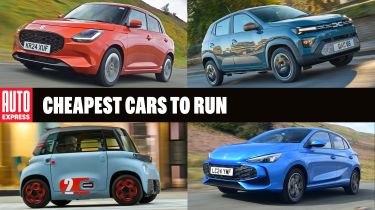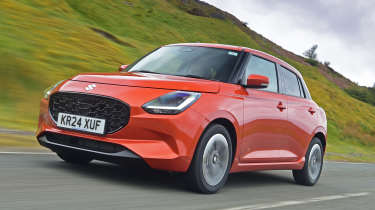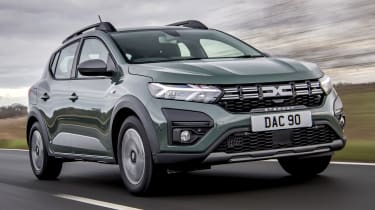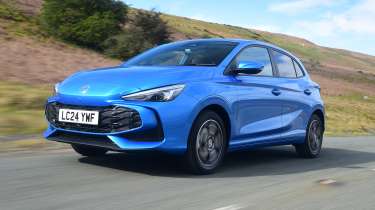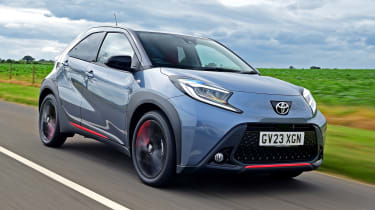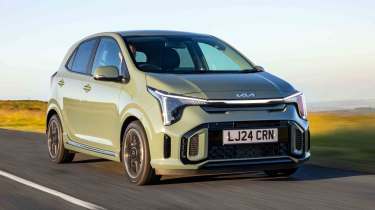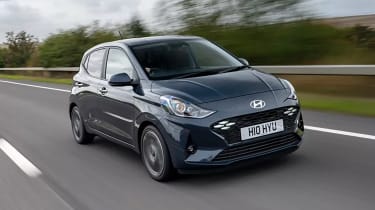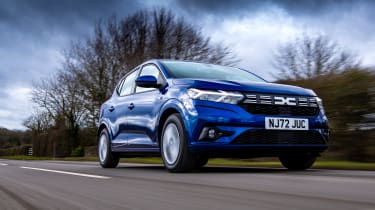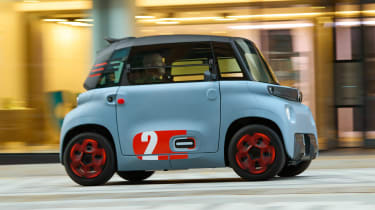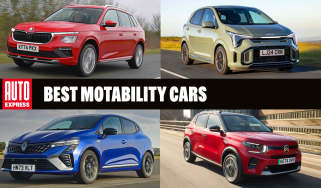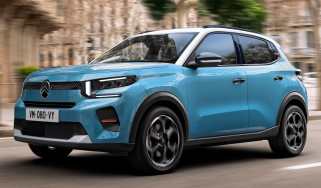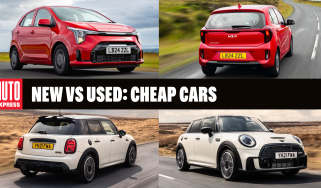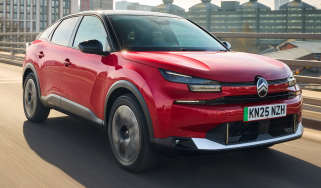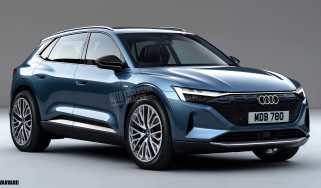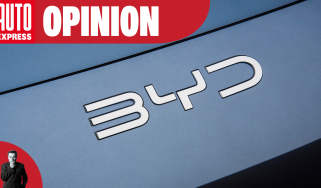Cheapest cars to run 2025
When it comes to total cost of ownership, cut-price entry-level models aren’t always the best. So what are the cheapest cars to run in the UK today?
When you’re looking for a new car on a tight budget, chances are you’ll be focusing on the windscreen sticker prices for an array of city cars, superminis or small SUVs. You’ll probably also be looking at the latest PCP finance deals in the hope of saving some more money, but are you also considering the long game? Which models really are the cheapest cars to run over the long term?
The cost of owning any car isn’t just about the amount of money you need to find up front, you’ll need to consider how much you’re likely to spend on fuel, maintenance and road tax over your whole ownership period. It’s also worth remembering that you’ll get a chunk of money back when it’s time to sell, the difference between this sum and what you originally paid being the car’s depreciation.
Taking all of these factors into consideration produces a Total Cost of Ownership (TCO) figure for any car – a number that’s easy enough to work out after you’ve owned a car, but predicting a TCO figure before you buy is a bit of a dark art.
That’s why we’ve teamed up with the experts at car data firm CAP HPI, and with the benefit of their expertise and algorithms, we’ve come up with predictions for the cheapest new cars to run that are on sale right now. CAP is the industry leader for new and used car valuations, and its figures are widely used by manufacturers to calculate new car finance costs based on predicted depreciation.
Top 10 cheapest cars to run
Without further ado, here are the brand new cars that cost the motoring equivalent of peanuts to run, in reverse order…
10. Dacia Duster
- Model: Duster 1.0 TCe 100 Bi-Fuel Essential
- Total cost over three years/30,000 miles: £13,469.61
- Monthly: £374.16
- Per mile: 44.9p
You expect to see city cars and superminis in a list of the cheapest cars to run, but a car like the Dacia Duster is a surprise. Though maybe it shouldn’t be, given it’s one of four Dacias here – value for money is the brand’s bread and butter.
Despite being a small SUV, under the skin the Duster is very similar to the Sandero and Sandero Stepway, right down to using the same 1.0-litre turbocharged three-cylinder engine with a choice of running on petrol or LPG. And LPG, while getting harder to find, is what helps keep the price down in the cheapest Duster to run – it’s under £1 per litre, compared to just under £1.40 per litre for unleaded at the time of writing.
Not that the Duster is a heavy drinker whatever you run it on, with a claimed fuel consumption figure of 43.5mpg and CO2 of 126g/km. With 99bhp at its disposal, it’s also the cheapest Duster to insure (in group 17 out of 50; every other version is group 24), and in basic Essential trim it’s the cheapest to buy, at £18,850 – less than some of the superminis below.
9. Suzuki Swift
- Model: Swift 1.2 Mild Hybrid Motion CVT
- Total cost over three years/30,000 miles: £13,396.84
- Monthly: £372.13
- Per mile: 44.66p
Suzuki has a good record for making cars that are affordable to run, and the latest Swift adds to that tally. That’s despite the CVT model, which CAP HPI says is cheapest to run over three years, costing £1,250 more to buy than the basic £19,199 manual version – and actually using a little more fuel than the manual too, at 60.1mpg combined to the five-speed’s 64.2mpg.
The CVT does perform a little better, thrumming to 62mph in 11.9 seconds to the manual’s 12.5s – the car’s modest weight helping here, despite a relatively low 81bhp power output. All Swifts feel lively though and they’re among the most fun small cars to drive, a little firmly suspended but eager and agile.
All in all, running costs come in at under 45 pence per mile over three years and 30,000 miles. As well as the frugal engines, and despite lofty insurance rates (the CVT is group 28) low tax helps, as does relatively low depreciation.
8. Dacia Sandero Stepway
- Model: Sandero Stepway 1.0 TCe Bi-Fuel Expression
- Total cost over three years/30,000 miles: £13,035.89
- Monthly: £362.11
- Per mile: 43.45p
The second Dacia on this list is also the next most rugged, after the Duster, and shares its engine with both the larger Duster and the less pumped-up regular Sandero. Once again, it’s that bi-fuel engine, which can run on LPG for about 40p/litre less than petrol, which helps keep running costs low – provided you can find a pump. The Sandero Stepway’s other engine choices are frugal as well, though.
Of course, it’s simply a low-cost car to begin with. Expression trim is actually one step above the basic ‘Essential’ model (and £1,000 more expensive, starting at £16,700), but the slightly fancier model is likely to depreciate less than the more miserly car, which lacks the Expression’s 8-inch touchscreen, parking sensors, and keyless entry.
It’s not the most sophisticated supermini but we like the chunky styling, straightforward driving experience, and the fact that Dacia motoring doesn’t take place to a chorus of bongs and beeps from various driver aids – even if that does mean just a two-star safety rating from Euro NCAP.
7. MG Motor MG3
- Model: MG3 1.5 Hybrid SE
- Total cost over three years/30,000 miles: £12,868.82
- Monthly: £357.47
- Per mile: 42.9p
When we last did our rundown of the cheapest cars to run, in early 2024, there was an MG3 present then too – but this year’s MG3 is quite a different beast. It’s still a frugal supermini, but rather than being an update of a car that had been around since 2011, today’s MG3 is all-new, and all the better for it.
For a start, it’s a full hybrid now, and one of the cheapest full hybrids on sale: an SE like the one CAP HPI says is cheapest to run starts at £18,495, which isn’t bad at all for a car that develops 192bhp and gets from 0-62mph in 8.0 seconds. In fact, as well as being economical, with a claimed 64.2mpg, it’s as close as you’ll get at this price to having a hot hatch.
The handling is quite fun too, if less sophisticated than some rivals, and it also rides well. Insurance is more expensive than some, at group 23, but depreciation isn’t bad – in a similar timeframe to CAP’s figures, it should lose only around half its value.
6. Toyota Aygo X
- Model: Aygo X 1.0 VVT-i Pure
- Total cost over three years/30,000 miles: £12,701.62
- Monthly: £352.82
- Per mile: 42.34p
The Aygo X is Toyota’s intriguing way of staying involved in the shrinking city car class, with the Japanese firm turning its smallest car into a micro-SUV. With its distinctive looks, surprising practicality and decent levels of equipment, the Aygo X makes a decent if slightly unusual purchase if you’re looking at this end of the market.
Fuel economy of up to 58.85mpg will help keep fuel bills down, while CO2 emissions of 110g/km put it in a £185 tax band. The Aygo X should also be pretty cheap to insure, with the entry-level Pure trim model sitting in insurance group 5.
5. Kia Picanto
- Model: Picanto 1.0 ‘2’ Auto
- Total cost over three years/30,000 miles: £12,636.18
- Monthly: £351.00
- Per mile: 42.12p
The Picanto is Kia’s smallest car, but it still feels well made inside, with a spacious cabin featuring an abundance of premium-feeling materials. It’s also very comfortable and refined for such a small car, and fun to drive. As a final bonus, every model in the Kia range is sold with a brilliant seven-year warranty.
If you want the lowest running costs, though, you will have to compromise on performance – the derivative we’re looking at here uses the entry-level 1.0-litre engine, which produces just 66bhp. On the plus side, this engine only produces 109g/km of CO2 and can achieve up to 58.9mpg, which makes for low fuel bills and keeps the first year of vehicle excise duty pegged at £185.
4. Hyundai i10
- Model: i10 1.0 Advance Auto
- Total cost over three years/30,000 miles: £12,363.04
- Monthly: £343.42
- Per mile: 41.21p
The i10 is based on the same platform as Kia’s Picanto, sharing the same 1.0-litre, 66bhp engine, but features slightly sportier and more aggressive exterior styling.
Unfortunately, it’s not quite as funky inside, with a pretty plain interior design and layout. Again, though, it’s very well made, and spacious. The latest i10 also has a longer wheelbase than the car it replaced, which helps to improve the ride and handling. There are better-driving or handling city cars in this dwindling class, but you’ll have to pay more to buy and run them.
The Hyundai has everything stacked in its favour when it comes to reducing its TCO figure and at 41.21p per-mile this is a very affordable car. Fuel economy stands at 54.3mpg and CO2 figures of 119g/km. If you choose Advance trim with the automatic gearbox, the i10 sits in insurance group 3, meaning it shouldn’t break the bank when it comes to getting insurance.
3. Dacia Sandero
- Model: Sandero 1.0 TCe Bi-Fuel Essential
- Total cost over three years/30,000 miles: £11,618.41
- Monthly: £322.73
- Per mile: 38.73p
The Dacia Sandero is officially one of the cheapest cars to buy in the UK, so it’s only fitting that it costs less to own than all but the two cheapest electric vehicles on the market.
When it launched, the original Sandero was Britain’s cheapest car to buy outright, and by some margin, but it was much more basic back then. It’s since grown up, thanks to a close relationship with the current Renault Clio. Also, the famously simple Access trim, with its lack of body-coloured bumpers, a radio or air-conditioning is no longer part of the Sandero range; today’s base model is Essential, and comes with a modest but still respectable list of kit.
Regardless, the Dacia is still an excellent-value car, especially considering its now more-refined nature, with improved ride comfort and a relaxed setup making it a decent car both in town and on the motorway. Interior quality is much improved in comparison to the previous generation of Sandero, with softer touch materials and a generous level of standard kit.
2. Dacia Spring
- Model: Spring 27kWh Expression 45
- Total cost over three years/30,000 miles: £10,539.84
- Monthly: £292.77
- Per mile: 35.13p
Last year, the Dacia Sandero was second on this list, but it’s been bumped down to bronze by its little sibling, the all-electric Dacia Spring. Based on the petrol Renault Kwid sold in the Indian market, and built in China, the Spring is the cheapest “proper” electric car you can buy right now, with a starting price of £14,995.
That’s the model CAP HPI says has the lowest TCO of all, though in reality, we’d want to move up to the ‘65’ model from the 45, as its 64bhp motor offers a large bump in performance over the 44bhp car for the extra £1,000 it’ll cost you – 13.7 seconds from 0-62mph, rather than 19.1s.
Expression trim is back-to-basics but you still get air conditioning and a bunch of airbags, plus rear seats, so it’s an order of magnitude better than a Citroen Ami in that regard. The claimed range of 140 miles is just about achievable too, and of course, it doesn’t use a great deal of energy to do that.
1. Citroen Ami
- Model: Ami 6.3kW
- Total cost over three years/30,000 miles: £6,112.41
- Monthly: £169.79
- Per mile: 20.37p
The Citroen Ami could be seen as something of an imposter here as it’s technically not a car at all – it’s legally classed as a quadricycle. But it still has four wheels, a steering wheel and an enclosed space with seating for two people. The Ami can also be run for as little as 20.37p per-mile. This adds up to a running cost of just under £2,500 per 10,000 miles.
There’s a slight caveat, however, as very few Ami owners will end up doing as many as 10,000 miles a year. This is because the French quadricycle is a vehicle that has been built specifically for those who clock up lower mileages in built-up urban environments.
With a lack of creature comforts, a range of only 46 miles and a top speed of 28mph, it wouldn’t be suitable for longer trips and those cost savings demand real compromises. When the Renault Twizy replacement, the Mobilize Duo, comes to the UK with its 50mph top speed and 100-mile range, the Ami will have a real fight on its hands.
What's the cheapest car to run that you've ever owned? Let us know in the comments...

